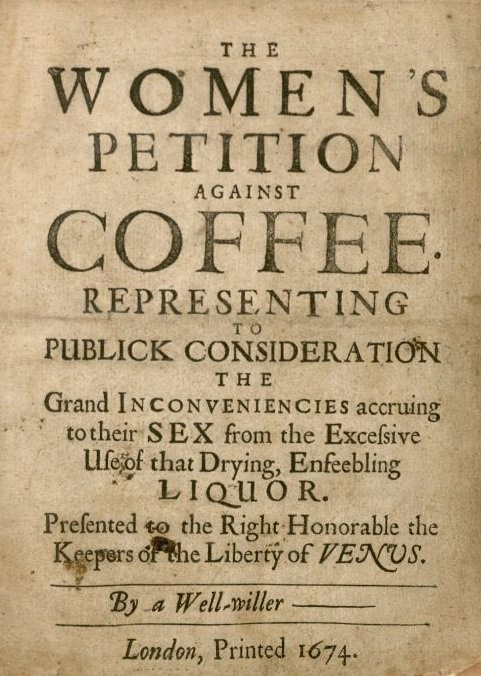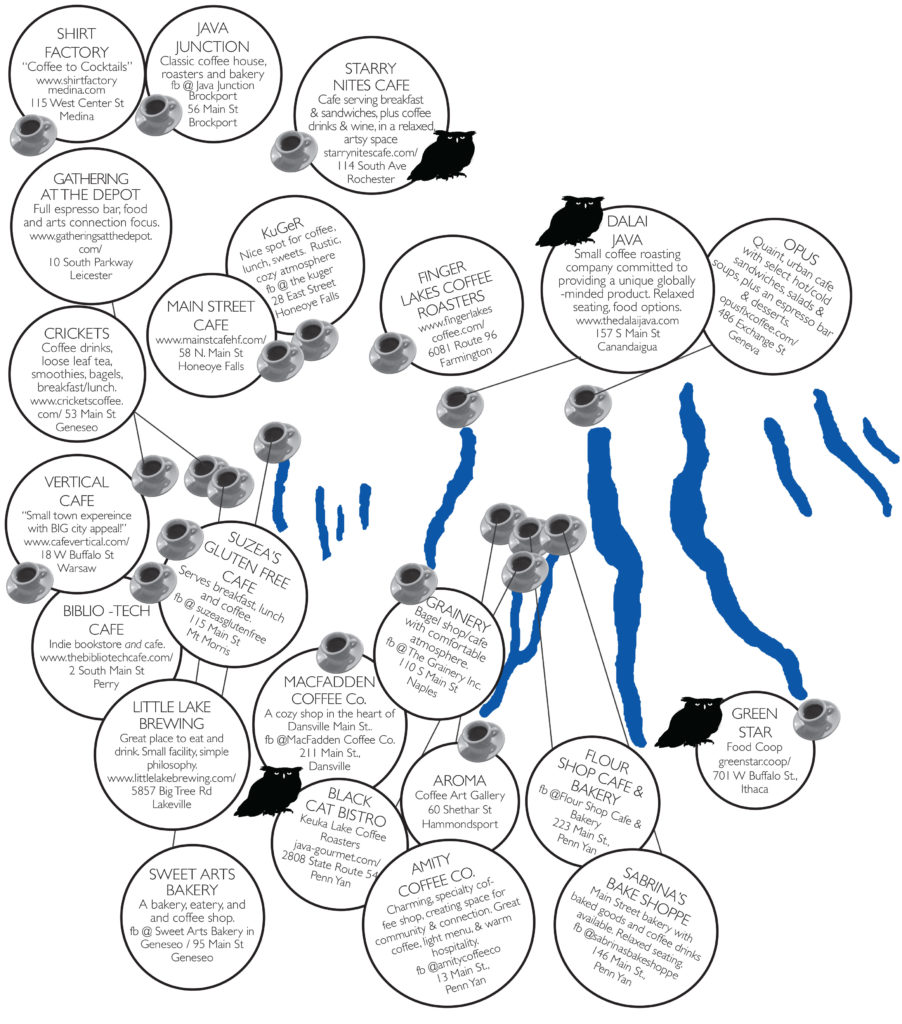Stimulating Conversation
Coffee houses offer more than coffee to chase away winter’s chill

Coffee houses dot our rural and urban landscapes, offering us spaces to relax and socialize. Winter is an ideal time to settle into a quiet corner to read, join a lively group of fellow citizens conversing on the topics of the day, or listen to music and stories during an interesting evening out. One of the things I love about coffee houses is the way they develop character as they grow and evolve in response to proprietors, the community, and the customers—primarily the regulars who come to see these environs as homes away from home.

Coffee houses, in the US and around the world, have a long and, at times, sordid history —as Tom Waits alludes to in “Hold On.” Frequented by poets, playwrights, politicians, journalists, scientists, artists, and other stimulated thinkers, the earliest coffee houses were more diverse than many other establishments, which made them ideal places for conversing openly about current affairs. Modest entry fees made them accessible to almost anyone (almost anyone male, that is) and earned them the English nickname of “penny universities”. As coffee houses gained in popularity in thriving cities around the world—*Constantinople in the 1470s; followed by Venice (1600), Oxford (1651), London (1652), New York City (1668), Paris (1672); Vienna (1683), Berlin (1721), and others—they also had detractors. These included various political leaders—who saw these as places where sedition could fester (GoCoffeeGo.com). And wives—who resented, I am sure, their own social exclusion from these establishments and their husbands’ late-night absences. Herein lies the earliest hint of “you don’t meet nice girls in coffee shops.” In England, this discontent was marked by a document titled: The Women’s Petition Against Coffee. This was followed by The Men’s Anfwer to the Women’s Petition Against Coffee, vindicating Their own performanes…. In which men defend against the satirical affront on their masculinity and their coffee-drinking socialization. Coffee houses declined in the 1800s, although things were still buzzing with various coffee-related inventions, including the espresso machine (Yes!) and “soluble,” that is instant, coffee. (Oh no! No wonder coffee houses were on the decline.) Nonetheless, they persevered and fueled arts and political dissent in the 1950s and 1960s in places like San Francisco and Greenwich Village. We are now in a new wave of coffee houses that are hip, too hip some might say, and coffee drinkers with more discriminating tastes. At the newest artisanal coffee shops, coffee is seen as an art rather than just a great stimulant to inspire creative thought.
In this issue of Owl Light News, we touch on MacFadden Coffee Company, a newly reopened coffee house in Dansville, NY—whose owners are hoping to recapture that elusive character. We have mapped out many independently owned shops that we believe offer that “coffee house” flavor in their coffee offerings or conversational spaces. (All of the establishments mentioned we have been in, if only to drop a stack of Owl Lights). There are many places where we go to get coffee, everything from gas stations to interstate rest areas, but coffee houses are something more.